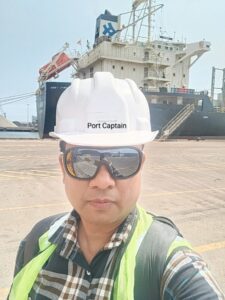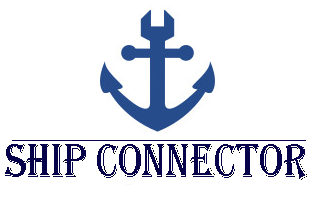Port Captain
Contents
Port captain Job description
Port captain job is to monitor the loading operations,so that the vessel is fit to sail with proper stowage plan.
He must coordinate with the ship during its stay in the port.
Must be aware of the restrictions and new port facilities guidelines.
The relationship with the Port and Terminal officials to be maintained at all times
Vessel inspections for commercial /vetting/fleet /QHSE departments
Sometimes it is necessary to negotiate rates with the stevedores,agents or other service provider on behalf of his principals
Port captain is required to attend pre arrival meeting in the port and later to work closely with the terminal management and stevedores.
One of the main job of the port captain is to prepare stowage plan or to manage stowage plan and the cargo intake optimization.
Ensure that the cargo loaded onboard are safe for transportation from one port to another and is in accordance with the IMSBC and Dangerous Goods Code
Qualification requirements:
Master Mariner/Chief officer with minimum of 3 to 4 years’ experience with relevant experience in commercial shipping
Must be physically fit to visit ships at different locations.

A port captain, also known as a harbor captain or port master, is a maritime professional responsible for overseeing the daily operations and safety of a port or harbor. Their role is crucial in ensuring the efficient and secure movement of vessels, cargo, and personnel within the port area. The port captain works closely with various stakeholders, including ship operators, port authorities, pilots, tugboat operators, and terminal operators, to coordinate activities and maintain a smooth flow of maritime traffic.
Key responsibilities of a port captain may include:
Vessel Traffic Management: Coordinating the arrival, departure, and movement of ships within the port to prevent congestion and ensure safety.
Navigational Safety: Monitoring weather conditions, tides, and other navigational hazards to determine safe transit routes for vessels.
Pilotage Services: Overseeing the assignment and performance of qualified pilots who assist ships in navigating through challenging waterways or entering and leaving the port.
Berth Assignment: Allocating berths to incoming vessels based on their size, cargo, and priority, while maximizing the port’s capacity and efficiency.
Cargo Operations: Collaborating with terminal operators to ensure efficient loading and unloading of cargo, as well as maintaining proper stowage and securing of goods on vessels.
Safety and Environmental Compliance: Ensuring that all operations within the port area adhere to safety regulations and environmental protection standards.
Emergency Response: Coordinating with relevant authorities and stakeholders in case of emergencies, such as accidents, spills, or natural disasters.
Communication: Facilitating communication between ships, pilots, tugboat operators, and other personnel to maintain smooth operations.
Port Security: Collaborating with security agencies to implement security measures and prevent unauthorized access to sensitive areas.
Port captains require extensive knowledge of maritime regulations, vessel operations, navigation, port infrastructure, and safety procedures. They must also possess strong leadership and decision-making skills to handle the challenges that may arise in a dynamic port environment.
It’s important to note that specific roles and responsibilities of a port captain may vary depending on the size and complexity of the port and the local regulations and practices governing port operations.
Instruction from the Shipper/Receiver
Received below provisional lotting from shipper, updated sheet to follow
Each lot has to have different distinct colour marking on the physically cargo and same should be mentioned on the respective BLs. Strictly follow the instructions of “one distinct colour for one lot/BL”
Do not mix lots of different colour while loading in the same hold.
During discharge receiver may experience enormous issues. Such as mismatch of colour marking and cargo separation turned out to be a major problem.
Different party bundles were packed/tied together, so discharge port stevedores had to cut strap and split bundles and incorrect stowage plan etc.
These all issues created confusion and slowed down discharge operations.
BLs for different shape material, different qualities i.e xyz 99.8% have to be issued separately i.e no BL to have two different shape of material.
All bundles should be banded with a least three bands. Kindly ensure.
Pre-sling will be arrange for the vessel i.e 6×6 pre-slung breakout square in each hold throughout tier of each hold way to bottom (2 MTons SWL capacity per strap).Kindly coordinate and keep updated.
Port captain should have full access to the loading operations to ensure colour coding, stowage, LSD and tally.
All dunnage used is fumigated and comply with applicable Phyto-sanitary regulation in force at all ends and Charterers/Shipper shall provide relevant fumigation certificate.
Kindly monitor loading operations of the cargo carefully and ensure that all cargo in one tier of the vessel are stored in a uniform manneri.e should have cargo within a single tier being loaded in different directions.
Daily reports along with operational photographs of the loading. Vessel completion report, SOF etc.

Port Captain Salary
Port Captain salary is normally per visit of the ship to the port,but if he is working with any agency then he will get paid on monthly basis
If a port captain is working as a freelancer he may get up-to 80000 INR for every visit of the ship to port and if he is working with an agency he may get slightly low for every call of the ship but he will get work continuously which is not a case in being a freelancer.

